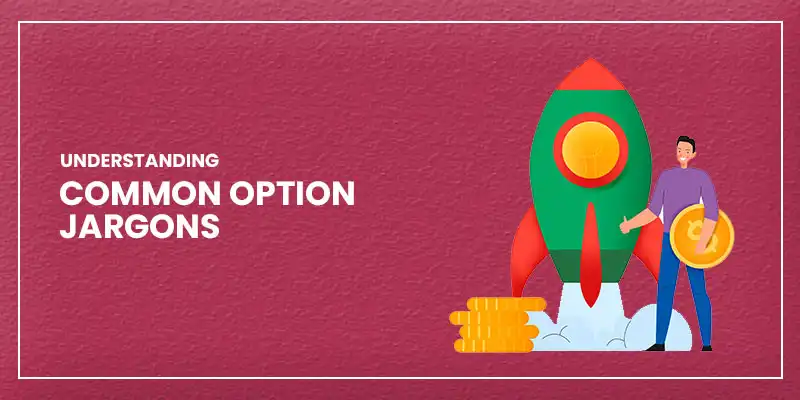Options trading uses specialized terminology essential for effective market communication. This article objectively explains core option jargon for all traders. It details key definitions, examines Greek letters influencing pricing models, and explores volatility, premium, and spread terms. The introduction aims to clarify complex language, offering a factual reference to understand common terminology used in options trading.
Contents
- Fundamental Option Terms
- Greek Letters in Options
- Volatility and Premium Terms
- Spread Terminology and Combination Strategies
- Additional Jargon
- Conclusion
- FAQs
Fundamental Option Terms
Several key phrases are routinely used to describe the status of an option.
- In the Money (ITM): It refers to an option with intrinsic value. For a call option, this occurs when the underlying asset’s price exceeds the strike price, while for a put, it means the asset’s price is below the strike.
- Out of the Money (OTM): In contrast, it indicates that a call’s strike price is above the asset’s current price or a put’s strike price is below it.
- At the Money (ATM): It means the option’s strike price is very close to the current market price of the underlying asset.
These standard terms help traders discuss scenarios without ambiguity and provide a baseline for further analysis.
Note: The use of these terms does not imply trading suggestions and is intended for terminology awareness only.
Read Also: LEAPS Options: Introduction, Strategies, Limitations And Examples
Greek Letters in Options
The so-called “Greeks” are symbols that represent various factors affecting an option’s price.
- Delta: It represents the expected change in an option’s price with a small move in the underlying asset’s price.
- Gamma: It measures the rate of change in delta for each one-point movement in the asset price.
- Theta: It quantifies the loss in the option’s value as time passes, commonly known as time decay.
- Vega: It indicates how sensitive an option’s price is to changes in the underlying asset’s volatility.
- Rho: It reflects the change in the option’s price relative to shifts in interest rates.
Each Greek provides a quantitative tool that helps understand the potential behavior of an option’s value. These are used as parameters in options pricing models but do not guarantee specific trading outcomes.
Volatility and Premium Terms
In addition to the Greeks, other necessary jargon describes option characteristics.
- Implied volatility: It is a metric derived from market prices that indicates the market’s forecast of an asset’s future volatility. This parameter, integrated into pricing models, is used in pricing models and may reflect market expectations of future volatility. It does not represent a trading signal.
- Time decay: It is sometimes reiterated as a second mention of theta. This represents the phenomenon where an option loses value as the expiration date nears.
- Premium: It refers to the price paid to acquire an option. Premiums are influenced by intrinsic and time values, which diminish over time.
Spread Terminology and Combination Strategies
Spreads and combinations involve multiple option positions to define risk or capture a particular market perspective.
- Bull call spread: It involves buying a call at a lower strike price while selling a call at a higher strike price.
- Bear put spread: It includes buying a put at a higher strike price and selling a put at a lower strike price.
- Straddles: These combine a call and a put at the same strike price.
- Strangles: These involve a call and a put with different strikes but with the same expiration.
- Calendar spreads: These refer to positions established by taking opposite positions in options with different expiration dates.
These terms specify the structure of trades and to facilitate discussions regarding strategy design.
Note: These strategy names are provided for educational purposes and do not constitute investment advice. All strategies involve risk and require detailed market understanding.
Additional Jargon
Additional terms include the following:
- Exercise is initiating the rights embedded in an option, and assignment is the process whereby the seller of an option is obligated to honor the contract terms once exercised by the buyer.
- The term open interest indicates the number of outstanding option contracts that have not yet been settled.
Note: Investors must interpret open interest and exercise data in the broader context of market movement and regulatory frameworks.
Read Also: 5 Most Popular Options Trading Strategies
Conclusion
Understanding commonly used option terms helps clarify communication in educational and informational contexts related to derivatives trading. It establishes a foundational understanding of technical vocabulary for budding traders. Enhanced comprehension of these definitions supports effective communication in discussions and analysis of option contracts overall.
Disclaimer: Investment in the securities market is subject to market risks. Please read all scheme-related documents carefully before investing. The information provided in this article is for educational and informational purposes only and is not intended as investment advice. Trading in derivatives, including options, involves substantial risk and is not suitable for all investors. Past performance is not indicative of future results. Consult a SEBI-registered financial advisor before making any trading or investment decisions.
FAQs
It is the act of invoking the rights granted in an option contract, leading to the realization of the underlying asset’s value as per contract terms.
Open interest shows the total number of unsettled contracts, while trading volume represents the number of contracts traded during a specific period.
This explanation is provided for awareness; it does not imply predictive value.
Implied volatility represents market expectations of future price movement and is a key component in pricing options, used as a variable in pricing models. It does not guarantee future price movement.

